EQ Eats IT For Breakfast
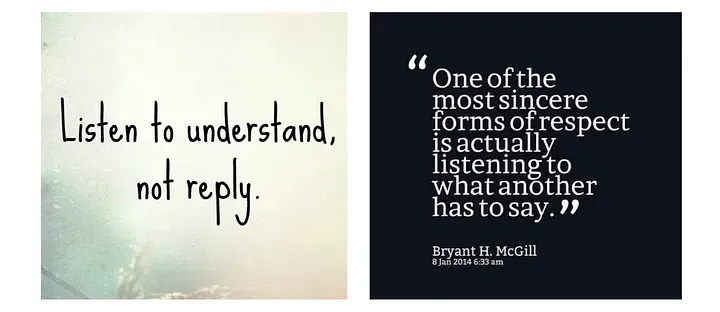
A version of this article/presentation was first presented at DeveloperWeek NYC 2019 (June) & then Ada’s List London 2019 (November). To see the Ada’s List presentation, click here.
In tech— where numbers, statistics, machines, devices and automation rules — it’s easy to loose sight of the fact that at the heart of it all, are people; working together to get things done.
If each of us invest in strengthening our working relationships, we collectively establish a foundation and environment for creativity and productivity to flourish.
Remote team working has its perks; teams solve problems faster when they’re more cognitively and consciously diverse. But when working remotely with team members, or clients, there are specific thought-processes, tools and methods that can (dare I say, should) be leveraged towards successful relationship building for creativity and productivity gains.
The following are 6 thought-processes, tools and methods I frequently refer to for relationship building so that creativity and productivity can flourish at Axioned.
1. You’re human; your team members are human.
When I was a young spring chicken in my 20’s I “othered”. A lot. The definition of “othering” is as follows: view or treat (a person or group of people) as intrinsically different from and alien to oneself.
I’m not saying that I no longer do this, I know I still have work to do, but my 20 something year-old self? She often thought that her ideas, solutions, ways of doing things were “right”, and others were “wrong”. And thinking this way often meant that I would disrespect my fellow team members in either obvious (with words) or not so obvious ways (with facial expressions).
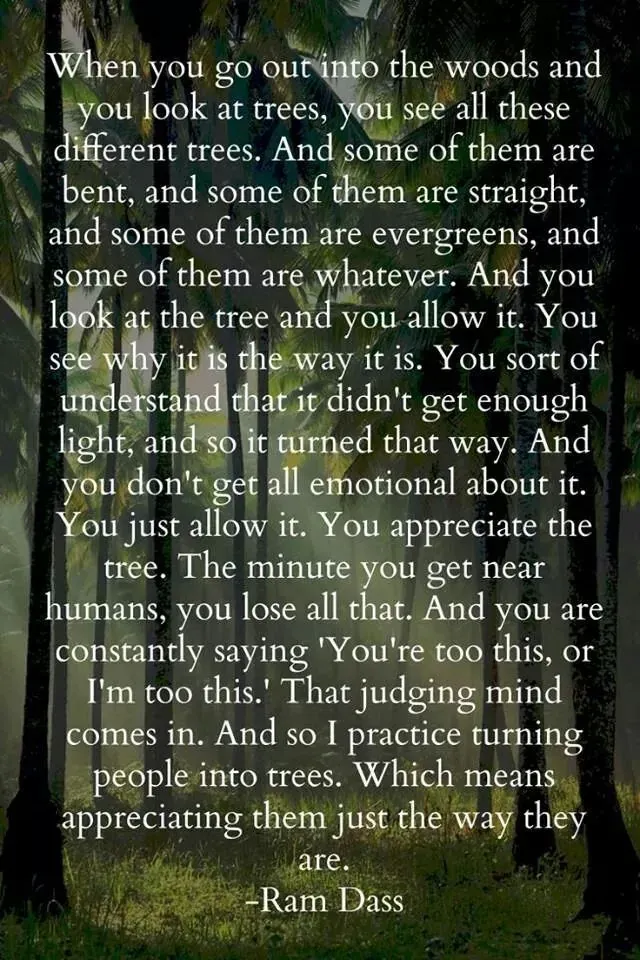
I often joke that my karma-tic deliverance came in the form of growing-out Axioned’s teams in Mumbai and subsequently NYC.
Throughout the years, my teachers have come in all shapes and sizes, and from all directions (juniors, seniors, peers, etc.). One such teacher was a lovely chap called Sanksshep Mahendra. Sanksshep showed me the power of treating everyone you’re working with, as equals. Never did I see Sanksshep treat the Axioned team members working with him/his team differently from his non-Axioned team members. He got the best performance out of his team as a result.
Anyone who treats a fellow team member, as a fellow human-being, of equal footing, gets the best results. Easy to understand, harder to practice. And not everyone, including myself, will master this in this lifetime.
2. Listen to your team member’s VOICE.
We have to talk WITH each other, not AT each other. If all we rely on is email and non-verbal communication…eek.
When/where possible have that conversation in-person or pick up the phone. Listening to the voice of the person you’re wanting to connect with is super-powerful. You can absorb important and informational cues in intonations and silences that you can’t always grasp from text; this is imperative for avoiding negative misinterpretations and assumptions that could derail you and your team-mate’s creativity and/or productivity.
Also, expression and tone tell more of a story than just text too! 😊
— Adi Bahri (@adi__bahri) April 2, 2019
You can absorb important and informational cues in intonations and silences that you can’t always grasp from text; this is imperative for avoiding disastrous misinterpretations with any fellow human being.
A study by Michael Kraus of the Yale University School of Management has found that our sense of hearing may be even stronger than our sight when it comes to accurately detecting emotion!
3. Don’t just “listen”. Actively listen.
Active listening requires the listener to fully concentrate, understand, respond and then remember what is being said.
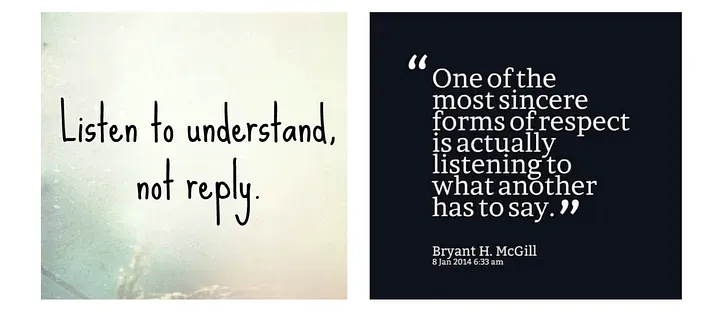
The problem many of us have (self-included) is that we think we’re listening, but we’re actually listening to our own random thoughts, “interesting replies” and “amazing solutions” (!) vs. the person we should be listening to.
How can you turn the volume on your own thoughts DOWN and the volume of you who you should be listening to UP?
Breath. “When in doubt, breath out.” Use your breath as a reminder/signal to bring your attention back to whomever or whatever it is that you’re listening to.
Take notes. When taking notes, I personally suggest the following:
- Use a pen AND a highlighter, so that you can highlight the important stuff.
- Carry a notebook that’s lightweight so that it’s never a drag to carry it with you.
- Don’t be restrictive with your note-taking. Draw. Make connections. Get messy. Scratch things out that are no longer relevant. Take-up MULTIPLE pages.
- Study-up on the art of note-taking: Read here. And here.
- If there hasn’t been a respectable gap in the conversation, and there’s something you really want to say, or an idea that you really want to share, write it down. Wait for the appropriate gap and/or the end of the conversation to say what you want to say.
Being a great listener is yet another way in which you can build stronger working relationships. It sounds simple, and looks easy, but it’s not. Listening is an art-form that requires constant practice. But you’re in luck; you can practice it with fellow human-beings, anywhere!
4. See your team. Let your team see you. Keep your camera on.
Yes, real-life/human stuff might happen when you’re on a video call. Personally, I’d advise that you embrace it/joke about it vs. try and hide it. You ARE human.
When/where possible, try and see and acknowledge the faces of whom you’re working with, and let them see and acknowledge you.
It’s better for everyone involved when your fellow team members can easily visualize your face (vs. zilch) when they see your name and email address in their inbox.
From my experience, levels of respect between team members and the ownership of work (aka everyone working together to “get things done”), increases, when there’s a suitable frequency of face-to-face interactions. If you can’t achieve face-to-face connections in-person, the next best option is to use tools such as Google Hangouts, Zoom, Skype, Appear.in, etc.
An added benefit of video calls vs. voice-only calls is that they force you to be fully present and attentive; you’re being watched! And you’re giving your audience visual proof that they have your attention and your ear. And they have visual proof that you’re doing the same.
A video call also gives you the ability to use your face and body to give your teammates clues as to how you feel about a situation. And you can watch their facial/body expressions for such clues also.
5. Give your team members explicit permission to ask for what they need. Communicate your needs also.
In the 1960s Marshall Rosenberg developed a process for practicing ‘Non-Violent Communication’ (NVC). His idea is that by clearly identifying, communicating, understanding, and listening to each other’s specific needs, and what’s driving them, we can achieve deeper levels of cooperation.
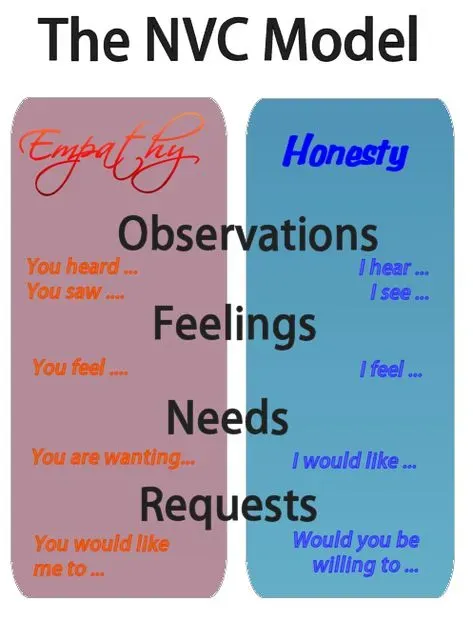
Like myself, you probably grew up learning and seeing a WIDE array of “bad examples” when it comes to communication. And it’s a long and difficult journey (it has been for me at least) to unlearn the bad.
Rosenberg gives a framework for avoiding violent communication and toxic language, by learning how to communicate what you need and why, and how to listen for what other’s need, and why.
Rosenberg references a great story in his book about what happens when one does not communicate what they need…“Mother, are you all right?” “Yes,” she answered, “but I just had a sudden realization that’s very hard for me to take in…I’ve just become aware that I was angry for 36 years with your father for not meeting my needs, and now I realize that I never once clearly told him what I needed.” Rosenberg goes onto say that he never remembers her clearly expressing her needs to his father. “She’d hint around and go through all kinds of convolutions, but never would she ask directly for what she needed.”
In summary: Study the NVC model. And start getting specific with what you want or need, and why (self-observation/feelings), without blaming or criticizing.
6. Recognize and manage your triggers and negative thought processes.
When I see myself get triggered, or when I see a negative thought process edge it’s way into my cranium (which they do!), I try to invoke Tara Brach’s R.A.I.N technique, as outlined below.
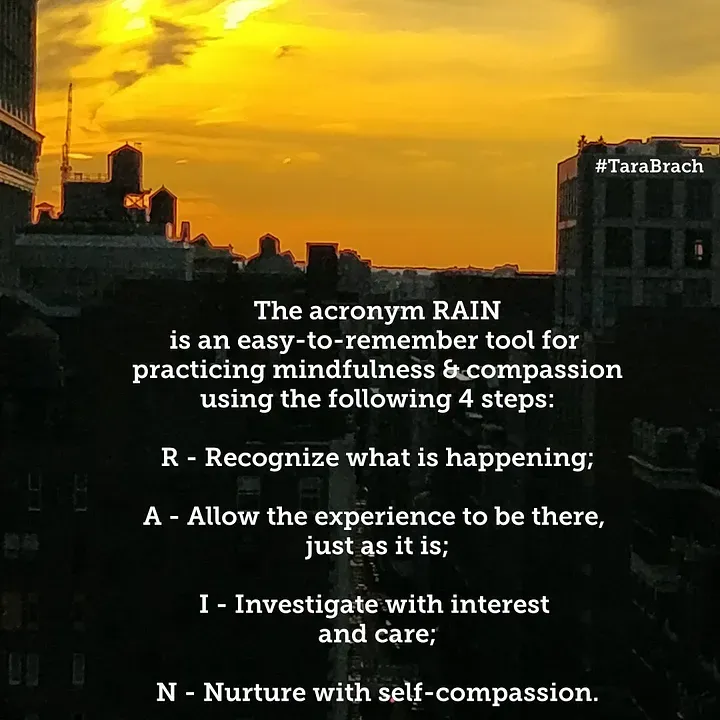
The game-changer — for me — has been the word/step “Accept”; allowing the experience to be there, just as it is.
When I accept, I’m naturally led into the process of investigation with compassion.
I have learned that if I accept something I should not expect to never experience that trigger/negative thought process again. Letting go of controlling the outcome — what happens after “accept” — has been key.
As a result of this ongoing practice of self-compassion and acceptance, I believe (?!) I’ve become more empathetic towards and accepting of others, especially in the workplace. I also have a lot more mind-space to focus on activities aligned with fostering greater creativity, productivity, and growth for myself and those I work with.
With the right foundation, the right things grow…
The goal with many of these relationship building techniques, is not about reducing human conflict to zero (impossible); it’s about learning how to RESPOND to conflict or discomfort so that it doesn’t negatively impact creativity or productivity, for yourself or those around you.
As touched upon by Thomas Friedman, in his recent NYTimes Opinion piece, Tiger Woods and the Game of Life.
“And so much of success in golf, as in life, is about how you react to those good and bad bounces. Do you quit? Do you throw your club? Do you cheat? Do you whine? Do you blame your caddie? Or…”
If we ALL spend a little more time thinking about the human element of our workplaces, and we each take the time to invest in thought-processes, tools and methods (similar to those mentioned here) creativity and productivity gains await us all.
